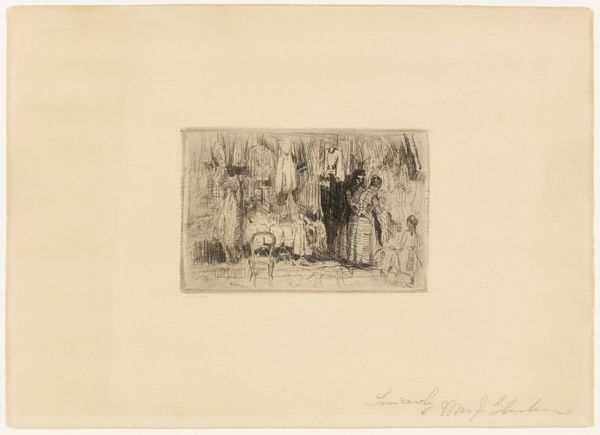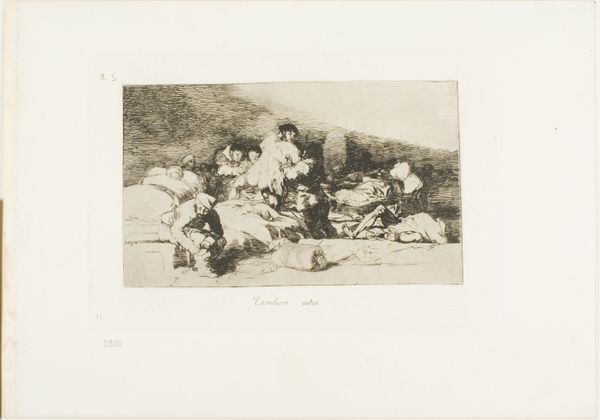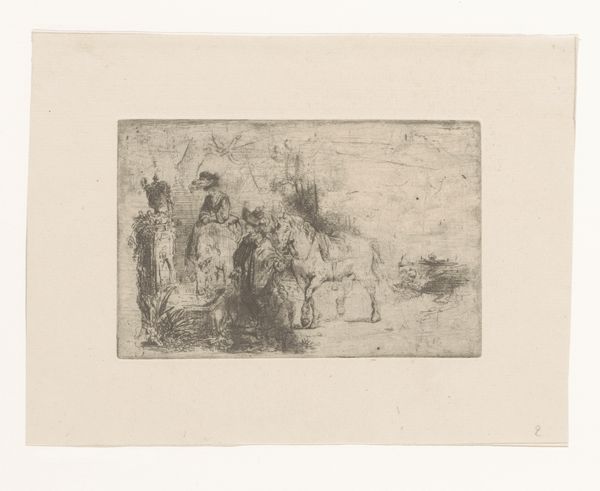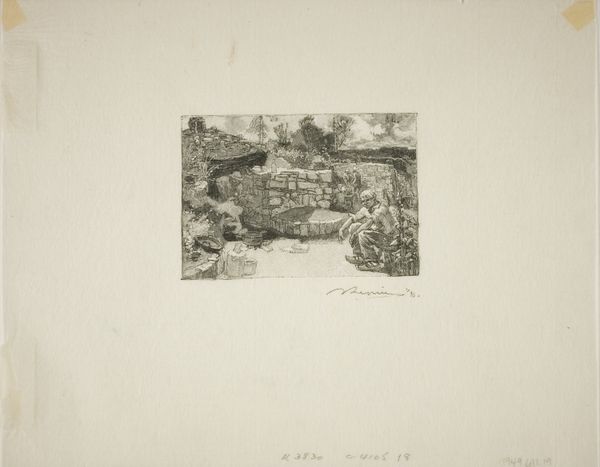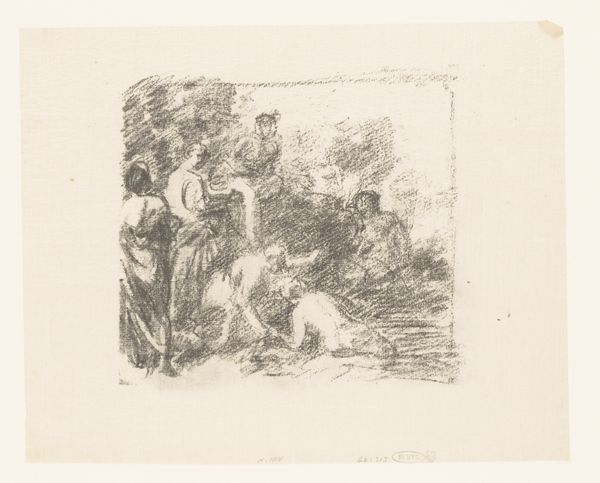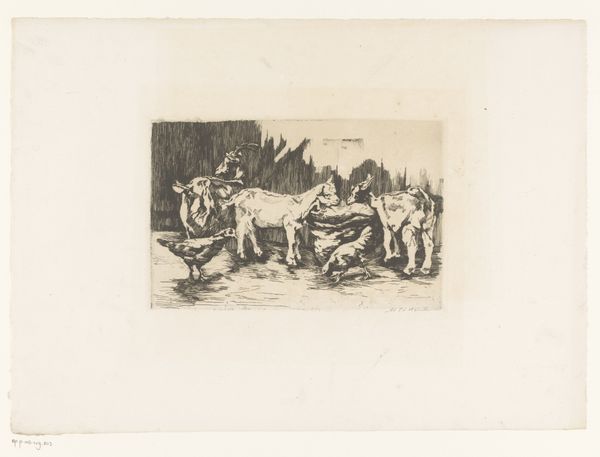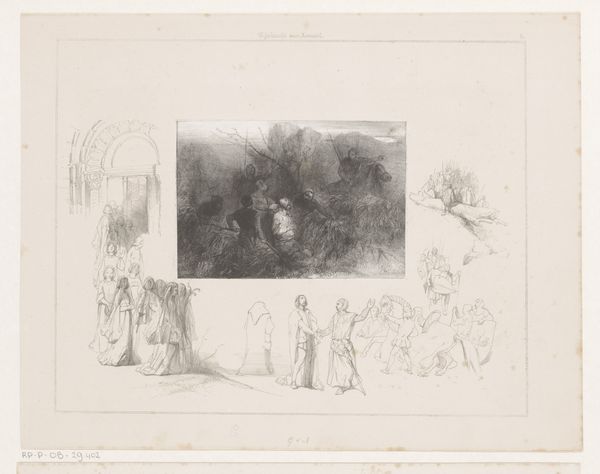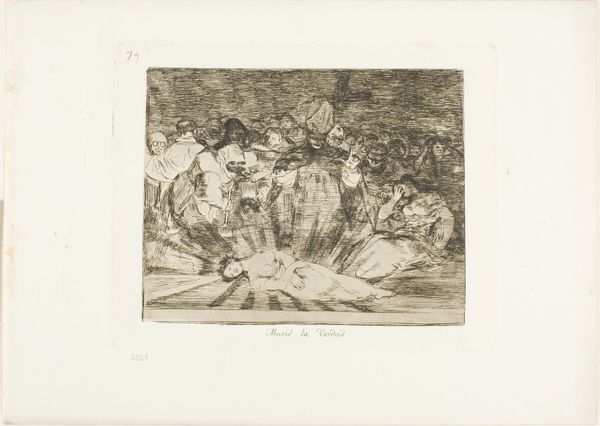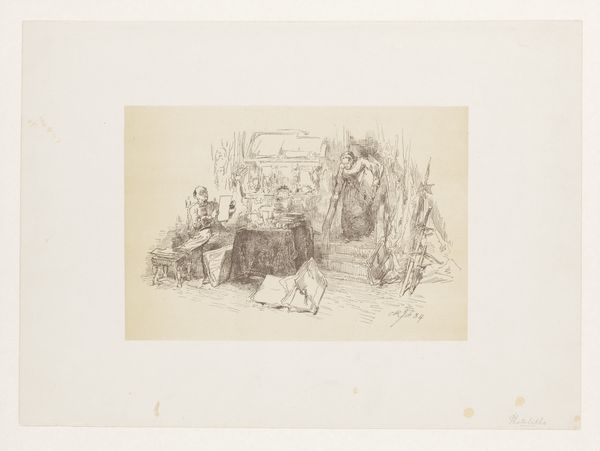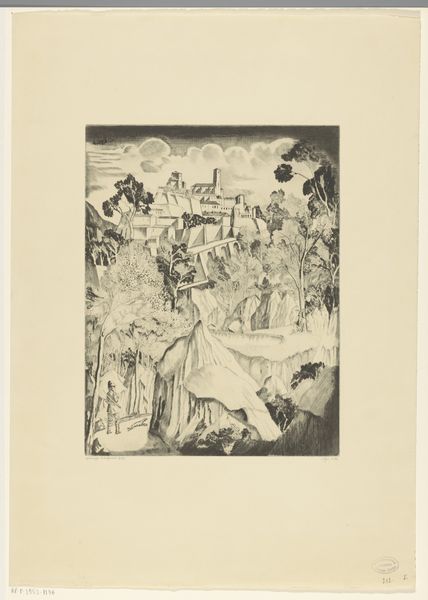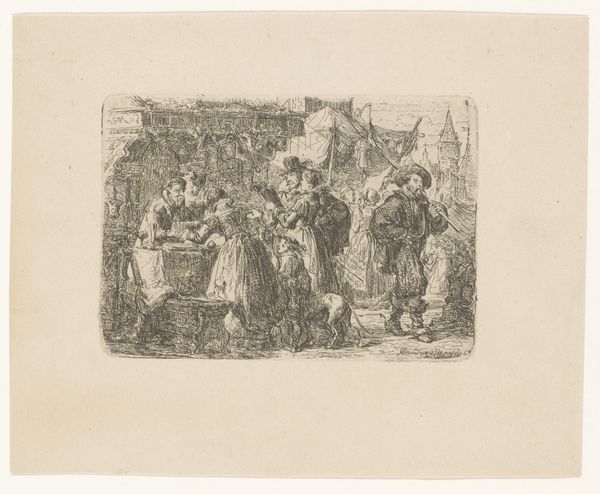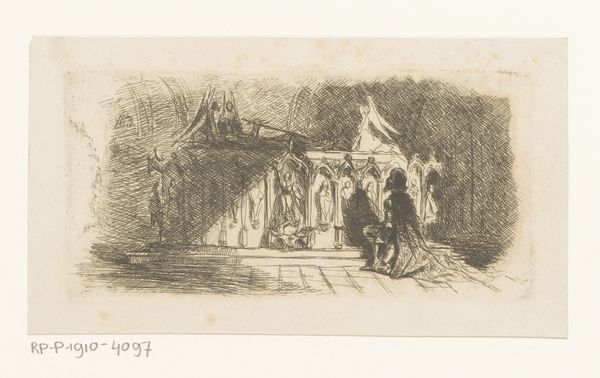
Mother Pichard's Canteen, Near Gorge aux Loups Possibly 1888 - 1908
0:00
0:00
drawing, print, paper, engraving
#
drawing
# print
#
landscape
#
charcoal drawing
#
paper
#
genre-painting
#
engraving
Dimensions: 80 × 161 mm (image); 193 × 266 mm (sheet)
Copyright: Public Domain
Editor: This is "Mother Pichard's Canteen, Near Gorge aux Loups" by Auguste-Louis Lepère. It's either from 1888 or 1908 and utilizes drawing, print, and engraving techniques on paper. The mood feels…everyday, almost documentary-like. What do you see when you look at this piece? Curator: I see a compelling depiction of the materiality of leisure and labour. The roughness of the engraving suggests a connection to the working class, while the scene depicts their fleeting moments of respite. Look at the stark contrast in textures – the roughly sketched figures versus the more detailed canteen implements. Editor: That's interesting! So, are you suggesting that the artistic process itself mirrors the social divisions present in the scene? The work required for leisure perhaps? Curator: Precisely! The very act of creating this print, using a relatively accessible medium, makes it relevant to understanding consumerism and class dynamics. Consider how prints democratized art ownership and dissemination at this time. Who could access this image and what did it mean to them? Editor: It makes you wonder about the labor involved in producing both the print and, actually, the canteen. I didn't initially see the canteen workers as also ‘laborers’ for this print. Curator: The print isn’t just depicting a scene, but participates in an economic system. And note the ephemeral quality; printed on paper, implying accessibility and potentially disposability, influencing art through both labor and consumption. Editor: I hadn’t really thought about it in terms of production before, but looking at the scene as a kind of industrial landscape, focused on labor in the act of selling and gathering at a popular attraction, definitely provides another dimension to its meaning. Curator: Indeed. It urges us to reconsider what ‘art’ is, moving it from pure aesthetics to a critical understanding of labor, materials, and social contexts that produce them.
Comments
No comments
Be the first to comment and join the conversation on the ultimate creative platform.
